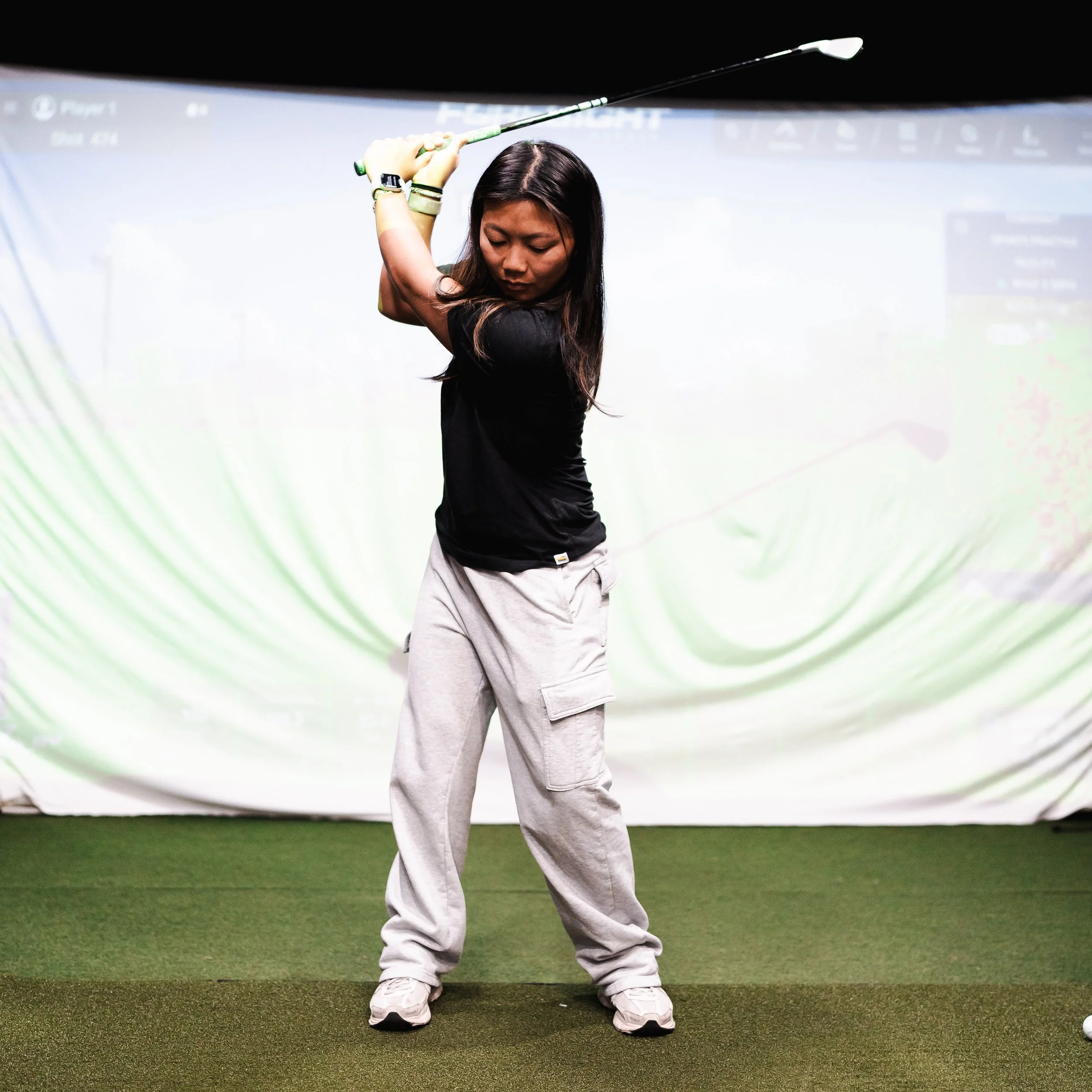Creating Force to Initiate the Backswing in Golf: What Every Golfer Should Know
Most golfers have heard that “power starts from the ground up,” but very few know what that means or how to use it at the start of the swing. The truth is, the way you create force to initiate your backswing sets the stage for everything that follows—your speed, control, and even injury risk.
This blog explains the biomechanics behind force generation in the golf backswing, demonstrates why it matters for your performance, and provides step-by-step drills to practice and master this skill. By the end, you’ll not only understand the why, but you’ll also know precisely how to train for a more powerful, repeatable swing.
Why Force Creation at the Start of the Backswing Is Critical
Force in golf isn’t just about muscle—it's about how efficiently you move and transfer energy. The best golfers generate force from the ground, using a blend of pressure, rotation, and sequence. When you create force correctly at the start of your backswing, you store energy like a spring, ready to release it into the ball for maximum distance and control.
If this step is rushed or weak, you lose potential speed and accuracy. Starting the backswing properly can also reduce the risk of strain on your back, shoulders, and wrists, making your swing safer and more sustainable over the years of play.
The Science: How Force Is Generated in the Backswing
When you initiate your backswing, force begins with the interaction between your feet and the ground. As your lead shoulder turns away from the target, you apply pressure to the ground through your trailing foot. This creates “ground reaction force”—a push that moves up through your legs and hips, winding your upper body and storing energy in your core muscles.
Simultaneously, your body starts to rotate, building torque between your hips and shoulders. This separation—often referred to as the “X-Factor”—is one of the primary contributors to swing speed in golfers of all ages and skill levels.
In essence, the first move of the backswing is about creating a stable base, applying force into the ground, and beginning a smooth, coordinated rotation. The more efficiently you create and store this force, the more potential you have to unleash it at impact.
Common Mistakes That Kill Backswing Power
Many golfers lose power right from the start by making these mistakes:
Starting with the hands or arms instead of the whole body. This disconnects the club from the big muscles and causes a weak, inconsistent swing.
Lifting the club without loading into the trail leg. Without pressure into the ground, there’s no stored energy to release later.
Swaying laterally (sideways movement) instead of rotating. Swaying reduces your ability to coil the body and generate torque.
Moving too quickly or with tension. Rushing the takeaway often leads to poor sequence and wasted energy.
How to Create and Feel Force at the Start of Your Backswing
Step 1: Ground Pressure Awareness
Stand in your standard setup and pay attention to the pressure in your feet. As you begin your backswing, feel yourself gently pressing into the ground with your trail foot (right foot for right-handed golfers). This isn’t a hard stomp, but a gradual increase in pressure as your body starts to rotate.
Step 2: Initiate With the Big Muscles
Focus on turning your lead shoulder (left shoulder for right-handed golfers) under your chin as you begin the backswing. Your arms should move as a result of your body’s rotation, not by themselves.
Step 3: Coil, Don’t Sway
Feel your weight move slightly into the inside of your trail foot as your hips and upper body begin to separate. Your hips should rotate, not slide. Imagine your body winding up like a rubber band—this coiling action stores elastic energy.
Step 4: Smooth Sequence, Not Speed
The start of the backswing should be smooth and connected. Think “slow to fast”—a gradual, athletic build-up rather than a jerky or rushed move. This ensures all parts of your body work together and energy is stored efficiently.
Drills to Build Forceful, Consistent Backswing
Feet-Together Drill
Place your feet together and make slow backswings, focusing on feeling the pressure in your trailing foot and a full shoulder turn. This helps eliminate swaying and encourages rotation from the ground up.
Medicine Ball Turn
Hold a light medicine ball at your chest in your golf posture. Make slow backswing turns, pressing your trail foot into the ground as you rotate your shoulders. This drill trains both balance and the feeling of “loading” energy into your core.
Pause-and-Go Drill
Set up normally, make a slow backswing to the top, pause for one second, then swing through. This trains your body to feel where the coil and ground pressure should peak, eliminating rushed or disconnected starts.
Pro Tips for Real-World Improvement
Film your backswing from behind and watch for lateral movement—rotation should be the main motion, not sliding.
If you’re unsure about your ground pressure, practice barefoot on a soft surface at home to sense where your weight shifts.
Start each practice session with slow-motion backswings to establish the correct sequence and build muscle memory.
Ask a coach to help you identify and correct early backswing mistakes for faster progress.
Frequently Asked Questions
Q: Why do I lose power even though I try to swing harder?
A: Power is lost when the body isn’t connected or force isn’t stored efficiently in the backswing. Focus on ground pressure and smooth rotation, not speed alone.
Q: Can older golfers create more force, or is this just for young athletes?
A: Every golfer, regardless of age, can improve backswing force with better technique and targeted drills. Learning to use ground pressure and rotation is often more effective than trying to add muscle.
Q: Will this also improve my consistency and distance?
A: Yes. Centered, forceful backswing initiation creates a more repeatable, stable swing, which leads to both longer and straighter shots.
Take Action: Upgrade Your Backswing Today
Assess your current backswing—are you feeling ground pressure and a full coil, or relying on your arms?
Add one drill to every practice session to train ground pressure and smooth rotation.
Track your results by noting improved shot distance and consistency over time.
Learning to create force at the start of your backswing is the fastest way to unlock more distance and control in your golf game, at any age, and with any swing style. When you master this foundation, every other part of your game gets easier.
Let this be the reason you never doubt your gym’s expertise or your own potential again.


